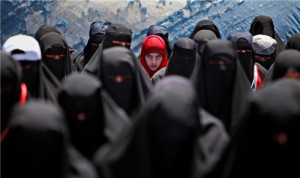
Saudi Arabia held out longer than others. In part, this was due to the course followed by King Abdullah. In domestic policy,this manifested itself by the fact that in March 2011,a broad social and economic program, valued at about 130 billion dollars, was launched. This program included increasing salaries of civil servants, creation of jobs in the public sector, including in the field of education (40,000 jobs), large-scale construction of housing,as well as school sand universities, provision of health insurance, and completely covering the costs of medical treatment.
In foreign policy, the Saudi rulers did what their teacher – the United States – was doing during the 2000s – exporting its crisis outside. Not having the ability to print currency and, accordingly, the exporting of inflation,they began to export instability,as is reflected in the support of the Syrian opposition, with money and weapons. Externally,this was justified by“saving the Syrian people from Assad’s bloody dictatorship”, but in fact,it was aimed largely to distract the public from domestic problems. At the same time, the task of sending the most radical part of the population on a jihad was solved (no actions were needed, except propaganda –people wentthemselves).As a result,foreign units fighting in Syria now are composed mainly of Saudis.
In 2013,this course has clearly run out of steam. Domestically, the release of the youth into the labor market is exceeding the capacity of the economy. Attempts to solve the problem through “Saudization” – that is,replacing the 8.5 million expats with Saudis, has given modest results. Since February 2013, the Government has shifted the terms for re-registration of documents of migrants three times (the task is to expel the foreigners that are illegally in the country).
This has occurred both because of the bureaucracy and due to the fact that there were virtually no people to replace the skilled foreign professionals. As a result, up to this October, the authorities managed to evict only 262,000 people.
In foreign policy,the situation is even worse.The inability to overthrow the Assad’s regime is perceived painfully by the population exposed to propaganda of a quick victory. Now the most desperate gestures need to be taken – such as the refusal to work in the UN Security Council, to which the Kingdom of Saudi Arabia was elected as a non-permanent member for 2014-2015 – to somehow try to hide this failure. However, its effects will not fail to affect.
Meanwhile, the feeling of frustration in the community keeps growing. Hopes of the youth, which makes up 69% of the 20 million people, for modernization did not come true. Problems of Shiites from the Eastern Province(one fifth of the population)have not been resolved. The demands to split the powers of the monarch and prime minister, for an introduction of a constitution, for general election sat all levels, expressed in Tweeter,failed to materialize. In return,the country has received the appointment of 30 women to the Advisory Council, Majlis al-Shura. As a large concession, authorities had represented the transfer of the weekend from Thursday to Saturday, but it was perceived by people as simply joining with the norm of other countries of the Persian Gulf, having days-off on Saturday and Sunday long ago. The measures invented by authorities such as the closure of stores five times for prayers,is also unlikely to reduce the mounting tension.
The fact is that in the minds of young people, browsing the Internet, an anti-patriarchal revolution is occurring. Going out in the street (and often driving cars with a wild roar at night), they see more and more the screaming gap between the lifestyle of Saudi Arabia and that of the rest of the world. At the same time, Twitter subscribers in Saudi Arabia are more numerous than in any other Arab country– 2.9 million, or 10% of the population. This is openly discussed in the local press.
Another front is women demonstrating increasingly active citizen positions, and doing this in bizarre Saudi forms. The very conservative society responds to their increasing activity with attacks and harassment in public places,including attempts at rape. Only in 2013, 1,669 of such cases were reported!
In response, the women’s demand to allow them to drive cars (in Saudi Arabia this is strictly prohibited!) has intensified.
Refusal of Ministry of Internal Affairs to give them this right already has already led to protests. YouTube is full of videos of women getting behind the wheel themselves! The depth of the crisis, which is perceived with an ironic smile from the outside,has reached the point that in the middle of October, 200 angry sheikhs came to the empty palace of the king (he was in Jeddah) and demanded to ban women from driving. In response, the ladies in the Internet vowed to conduct demonstrative actions of disobedience every month. The sheikhs’ opinions prevailed,and on October 25 the Advisory Board refused to consider the demand of three female deputies concerning driving rights for women,and the Ministry of Internal Affairs threatened to arrest all those involved in the organization off lash-mobs, under the cybercrime law. On October 26,thousands of police cars started monitoring the roads, ensuring that no woman would be driving a car!
(To be continued…)
Pogos Anastasov, political scientist, orientalist, specially for the online magazine “New Eastern Outlook”.
